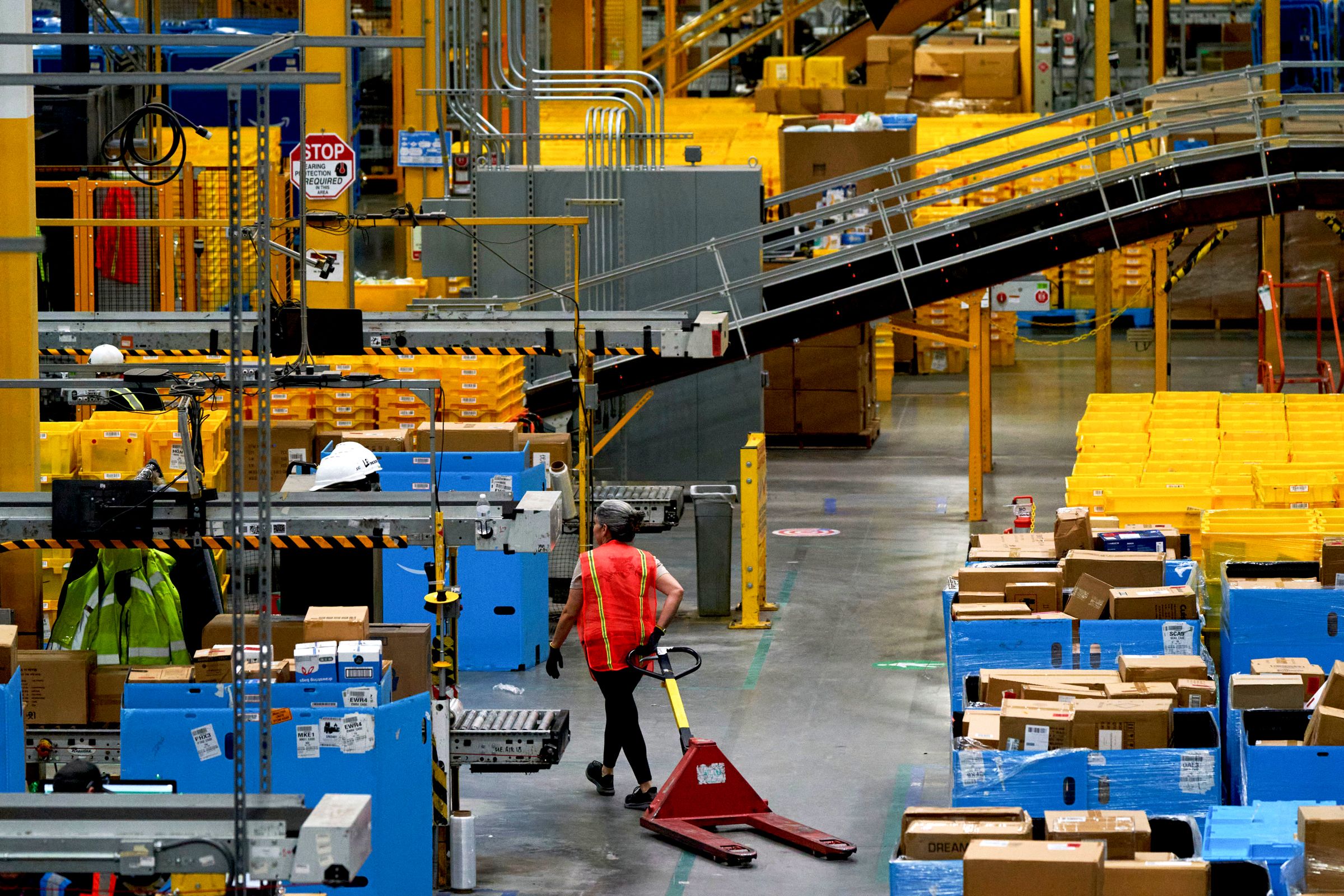It’s been a week since President Donald Trump imposed massive tariffs on Chinese imports to the United States, but the policies haven’t forced Amazon shoppers in the US to dig deeper into their wallets just yet. Recent data from price tracking websites reviewed by WIRED show little in the way of dramatic price hikes across most product categories on the ecommerce platform.
On Wednesday, the average price of goods on Amazon was higher than the previous 90 days in just nine out of 27 high-level categories monitored by the price-tracking firm Keepa, which says it collects data about billions of different items. The categories showing higher average prices included automotive, arts and crafts, and musical instruments, though the increase in nearly every group was under 1 percent.
Prices were lower in 16 of the categories, including appliances and toys. Most of the drops amounted to less than 0.5 percent on average. Prices on Amazon fluctuate regularly for several reasons, including when sellers offer deals, and information collected by the tracking websites can help illuminate these many shifts.
Amazon CEO Andy Jassy said on CNBC last week that he guessed Trump’s policies would raise costs for sellers on Amazon’s marketplace, which would eventually be passed on to customers in the form of higher prices. That may very well still happen in the near future if the tariffs rates on Chinese imports remain the same or increase for other countries.
But at least for now, ecommerce pricing experts say there are three leading reasons why Amazon sellers are keeping their prices steady: Many still have existing inventory in the US, are fearful about violating Amazon’s pricing rules, and remain inclined to wait out the mercurial president.
“Apart from a few isolated niche segments, we have not observed any significant price increases to date,” says Keepa CEO Julian Johann. “However, this situation may well evolve in the coming weeks and months.”
CamelCamelCamel, another service that provides pricing history for Amazon product listings, says it has also seen prices remain largely unchanged over the last week both for premier items, such as iPads, as well as household staples, including toothpaste and peanut butter.
The data fit with what Dani Nadel, president and chief operating officer of Feedvisor, says she is hearing from some of the thousands of businesses that use the company’s pricing software to manage their listings on Amazon and Walmart. “Many are taking a wait-and-see approach and don’t want to act rashly,” she says, noting that some stocked up on inventory earlier this year in anticipation of the trade war.
About 40 percent of the items consumers buy on Amazon are sold by the ecommerce giant itself. Independent merchants sell and price everything else—often with the help of software that can automatically adjust the prices consumers see. When multiple sellers offer the same item, those with the lowest price are more likely to be featured by Amazon and ultimately win the sale. Estimates suggest that over half of Amazon merchants are based in China, so a vast selection of goods on the platform may be vulnerable to Trump’s tariffs.
Fair Pricing Concerns
Amazon merchants that don’t have a stockpile of goods sitting in US warehouses are in a more difficult position to absorb the impacts of Trump’s tariffs. Importing a new batch of inventory from China is going to cost significantly more, but immediately passing on the expense to shoppers could trigger alarms at Amazon.
Nadel says Amazon’s “fair pricing” rules penalize merchants, including by potentially removing their listings, if they abruptly and dramatically hike up the price of their products. The exact thresholds that can lead to a listing being removed aren’t publicly disclosed, she says, so sellers often engage in “a tenuous dance” of gradual bumps. Experts say the policy has continued to be enforced in recent days. Will Amazon eventually relax enforcement in this volatile market? “I don’t think they know yet,” Nadel says.
Amazon declined to comment about the policy and how tariffs have generally affected prices.
So far, the small group of Feedvisor users that have begun accounting for the tariffs have been moving cautiously, according to Nadel. Feedvisor’s technology helps businesses dynamically adjust prices based on competing offers. But merchants can set a minimum to avoid matching outrageously low prices that would eat too far into their profit margins.
Some sellers in categories such as toys have raised their minimum prices by 5 to 10 percent this month to ensure they can recoup tariff-related costs, Nadel says. But higher minimums generally don’t affect shoppers unless prices were already about as low as sellers could bear.
Nadel says merchants also are continuing to insert “inflation-friendly” language in their product descriptions and advertising—think phrases like “affordable luxury” and “highest quality for the fairest price”—in an effort to resonate with ever price-conscious consumers.
Across the internet, some companies have reportedly enacted aggressive measures in response to Trump’s trade policies, such as adding a clearly labeled tariff surcharge at checkout. Chinese ecommerce giants Temu and Shein warned customers this week that they plan to start adjusting prices on April 25 and encouraged consumers to buy items now while better deals are still available.
In one Facebook group for Amazon sellers viewed by WIRED, merchants have been discussing strategies they can use to avoid tariffs or recoup the cost of them. Some also wrote that they have been surprised by unusual dips and spikes in sales during this period of volatility.
Fahim Sheikh, CEO and cofounder of pricing and advertising software company Trellis, says the tariffs are posing an existential risk to some of his Amazon seller clients, who are considering going out of business. “By the time they pay their suppliers, the money they are making is thin—10 percent to 15 percent for some of these guys,” he says. “Now, tack on these additional tariffs, there’s nothing really left for them.” Sheikh is bracing for not only higher prices on Amazon if the tariffs aren’t rolled back, but also less product selection.
Marty McCay, vice president and manager at pricing tool developer Repricer, estimates that a quarter of its clients have made adjustments to their sales strategies this month. That includes raising minimum prices or halting the sale of products that no longer make financial sense. But the overall activity on Repricer’s platform has remained stable at 5 billion price adjustments per week, further suggesting that the tariffs to date haven’t triggered absolute chaos for consumers.




